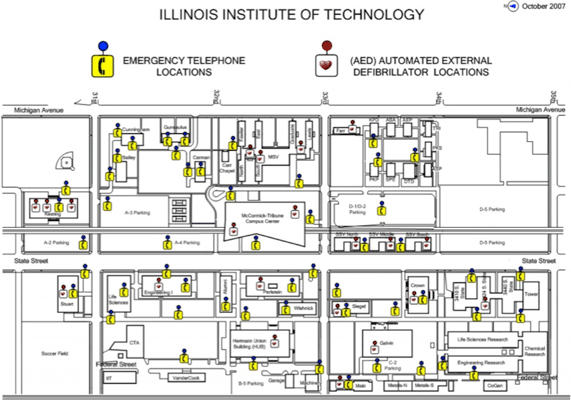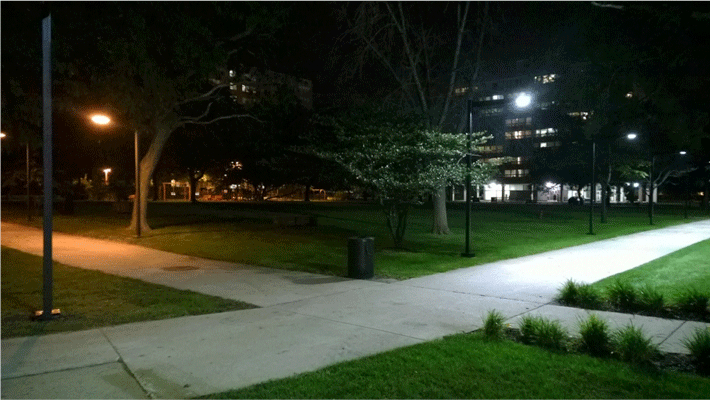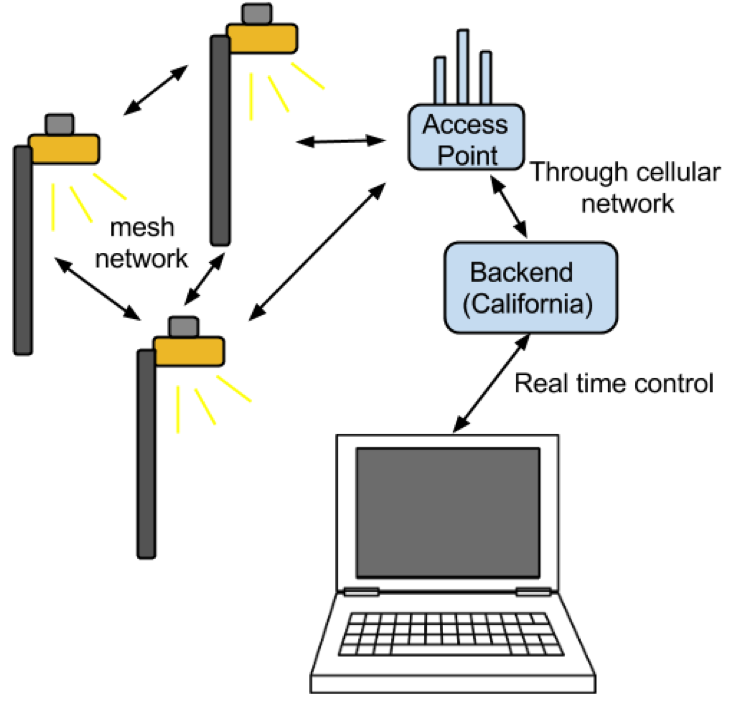|
The new-generation networked
LED street lighting system is
currently in
the prototype stage on the
campus of Illinois Institute of
Technology (IIT) and has
great potential for large-scale
deployment in major cities (e.g.,
under negotiation in Chicago now)
and the revolution of a critical
community service. The pilot
system consisting of 15
streetlights is operating on a
wireless networking infrastructure
(900 MHz ISM band) with
cloud-based control to enable
remote access and scheduling of
lights. Compared to the
traditional street lighting
system, it not only reduces
operating/maintenance/energy costs
up to 75%, but also offers a new
platform with APIs opening for
many innovative smart city
applications. Examples include
utilization of streetlights as
guiding signals for emergency
evacuation, precise location
indicators for ambulances during
medical emergency incidents at
night, or intelligent scheduling
with real-time traffic/weather
information for energy saving, and
many more. While these potential
new applications demonstrate great
utility for the public, they also
open up another avenue for
malicious cyber attacks, such as
denial of service or unauthorized
control, posing potential threats
to system security. Sufficient
security evaluation of such types
of new cyber-physical systems is
essential towards a successful
promotion of many new smart city
applications.
Specific Aim 1: Developing
and demonstrating innovative
applications for public safety
in the smart street lighting
system.
Example application: Integration with the IIT campus 911 emergency call buttons to enable adjacent streetlights to flash as warning signals upon the activation of a 911-call button.  Specific Aim 2: An extensive cyber security evaluation of the IIT smart street lighting system. Current Activities
 Publication/News
|


 Sponsored
by the
Sponsored
by the